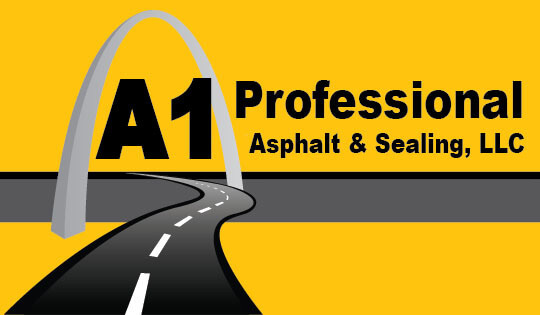Things about A1 Professional Asphalt & Sealing Llc
Things about A1 Professional Asphalt & Sealing Llc
Blog Article
All About A1 Professional Asphalt & Sealing Llc
Table of ContentsSome Ideas on A1 Professional Asphalt & Sealing Llc You Should KnowLittle Known Facts About A1 Professional Asphalt & Sealing Llc.What Does A1 Professional Asphalt & Sealing Llc Do?The 10-Second Trick For A1 Professional Asphalt & Sealing LlcFascination About A1 Professional Asphalt & Sealing Llc

The oil in a car engine is not simply oil. The REOB includes all the additives that were in the waste oil as well as the wear steels from the engine (primarily iron and copper).
By making many blends using different REOB samples and various asphalt binders, the variants greatly can be averaged out. A number of States supplied examples of well-known REOB composition to TFHRC researchers, that assessed the examples to contrast the portion of added (known) REOB to the discovered (checked) amount. The analyses showed a similar portion of added and discovered REOB.
The 15-Second Trick For A1 Professional Asphalt & Sealing Llc
None of those States realized that the asphalt they were buying had REOB. One State insisted its samples had no REOB - https://giphy.com/channel/a1aspha1tseal.
Of the 1,532 examples checked, 12 percent consisted of REOB, and some consisted of substantially high degrees of it at 1020 percent. The greatest level was 34 percent in a sample from Texas, which TxDOT had actually utilized in a patching compound. This testing also disclosed the presence of phosphoric acid in 11 percent of the examples, and 2 percent consisted of ground tire rubber.
Two years ago at TRB's yearly conference, the Federal researchers held an REOB workshop and presented the searchings for of their lab examinations to a standing room-only crowd. Although some agencies do not specifically ban REOB, they do enforce physical tests that avert its useeffectively a restriction. what is cold mix asphalt. Others do not ban it by requirements, but have arrangements with asphalt suppliers to prevent the usage of REOB
Some Ideas on A1 Professional Asphalt & Sealing Llc You Need To Know
A handful do allow REOB, some within particular restrictions. As an example, Ohio and Texas restriction degrees to much less than 5 percent of the asphalt. To establish a reputable examination method that all States can utilize, the TFHRC scientists established a round-robin examination strategy. The individuals are 11 State freeway agencies (Illinois, Massachusetts, Minnesota, Mississippi, Montana, North Carolina, Oklahoma, South Carolina, Texas, Vermont, and Wyoming), 2 independent testing labs, the Ministry of Transport in Ontario, Queen's University in Ontario, and an Ontario resource paving service provider.
In total amount, the scientists prepared and delivered 720 blends. The participants are evaluating the samples independently using the guidelines offered by the TFHRC scientists. The round-robin screening is virtually completed, and TFHRC is in the process of gathering the results. The output will certainly be a recommended AASHTO test method that any State can take on and use (asphalt sealcoating in st louis).
The sidewalk with REOB, which is located 0.6 mile (1 kilometer) from the pavement without REOB, has similar subgrade, traffic thickness, and environment. The section of Highway655 with 5 to 10 percent REOB showed substantial splitting. In this instance, the presence of REOB was the identified source of breaking at a reduced temperature levels.
An area of test pavement in Minnesota (MN1-4) discovered to contain REOB likewise broke too soon. The pavement carried out well for the initial 3 to 4 years, yet then started to break.
Indicators on A1 Professional Asphalt & Sealing Llc You Should Know
The examinations were not considerable, but they revealed that at degrees of 6 percent or more, the tensile strength of the asphalt went down significantly. At a level of 3.5 percent REOB, the variation in the physical test techniques was above the impact of REOB. It was hard for scientists to examine whether REOB was existing. https://a1-professional-asphalt--sealing-llc-45929274.hubspotpagebuilder.com/blog/a1-professional-asphalt-repairs-paving-excellence-in-st-louis.

One binder specification considered is the difference in between the reduced temperature essential specification temperature for rigidity (S) in the flexing beam of light rheometer and the flexing light beam rheometer creep incline (m-value) noted as Tcritical. TC = TC (S) TC (m-value). Examination of this specification is still ongoing. 2 independent research study teams, one from AASHTO and the other from the Asphalt Institute, wrapped up that more research is required on using REOB in asphalt.
Formerly, all asphalt testing measured engineering residential or commercial properties such as rigidity. These examinations do disappoint what products had been included to the asphalt. One example gotten throughout the TFHRC study had an extremely weird evaluation. The example had the adhering to test outcomes: Superpave PG 64-28 with a high temperature level grade of 67.3 Tcritical on the flexing beam of light rheometer was 6.7 degrees Celsius.

The Main Principles Of A1 Professional Asphalt & Sealing Llc
These outcomes demonstrate there are weaknesses in the standardized engineering testing procedures that may be exploited. The producer may have an economic advantage and the item passes all the standardized examinations, but the product may not be advantageous to guaranteeing lasting efficiency. To address this problem and the growth of new asphalt ingredients and extenders, TFHRC is starting a study program to utilize handheld spectroscopic devices, x-ray fluorescence spectroscopy, and Fourier transform infrared spectroscopy to enable evaluations to be done in the field instead of having to take examples back to the laboratory.
Report this page